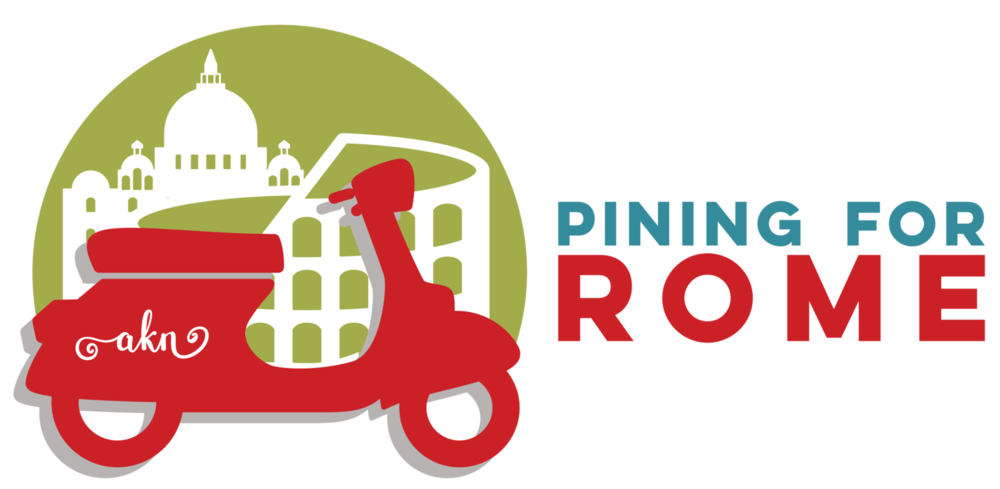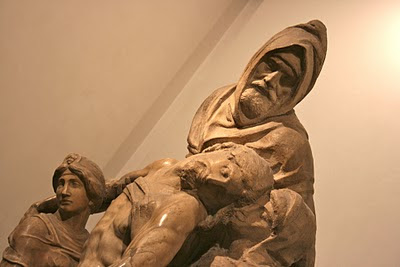I’m so excited to invite you to the Sistine Chapel this summer — in Denver! Michelangelo’s Sistine Chapel Exhibition, an exhibit of larger-than-life photographs of Michelangelo’s frescoes, is currently on view at The Stanley Marketplace. And they have invited me to give a series of talks about Michelangelo in the exhibit space.
Read MoreSunset over Rome from the roof of St. Peter's
 |
| A Simba moment with Bambino |
 |
| Michelangelo's dome over St. Peter's Basilica at sunset |
 |
| As the lights warm up, they first glow green and then amber which is rather magical against the darkening sky. |
 |
| I had never been inside the basilica at night before. It is beautiful! |
Becoming Nicodemus
Today I am the guest blogger for my church's Lenten devotions. I thought I would share it with you as well as there's a little faith, a little travel, and a lot of Italy infused.
“For God so loved the world that he gave his only Son, that everyone who believes in him may not perish by may have eternal life.” John 3:16
Behind the Duomo -- in the center of historic Florence, Italy -- sits a small museum. The sign over the door simply reads, “Museo” -- not particularly strong advertising which probably explains the lack of crowds in this museum. But the Museo dell’Opera del Duomo holds one of Michelangelo’s most personal and dramatic works of art: the Florentine Pieta.
When, at the age of 24, Michelangelo finished the better-known "Rome Pieta," he became an instant celebrity. But that stunning, polished work is the composition of a younger man... one who lost his own mother when he was six years old. "The Rome Pieta" is the work of a young man looking for financial security and trying to make a place for himself in Renaissance Italy. "The Florentine Pieta" is a work of another kind.
In 1574 Michelangelo’s best friend, Vittoria Colonna, died. Vittoria had been his deepest confidante. Every Sunday afternoon, they sat on a balcony at the convent where she lived in Rome. Together they discussed the deep theological questions of the day: What is the nature of grace? What is the nature of sin? Who has religious authority on Earth? They had watched the Reformation and the Counter-Reformation first-hand, and they were both keenly interested in theology. They wrote letters to each other and shared poems back and forth.
So, when Vittoria died, the seventy-two year-old Michelangelo was bereft. He turned to poetry, writing about her as a blessing in his own life:
So, why did Michelangelo choose to depict himself as Nicodemus? Because, like Nicodemus, he was filled with questions -- and yet, he simultaneously believed. In their dialogue, neither Vittoria Colonna nor Michelangelo feared asking hard questions. They both saw questioning as a deeper part of faith -- not a popular opinion in Rome during the Counter-Reformation. Indeed, much of their recorded dialogue sounds rather Lutheran in context and might have endangered Michelangelo’s career had it been made public. Thus Michelangelo was obsessive about burning his papers leaving relatively little behind after his death.
Reread that story of Jesus speaking to Nicodemus (John 3). Jesus doesn’t shame Nicodemus for asking him questions. He answers. And Nicodemus continues to ask him the hard questions. But when it comes time for the crucified Christ to be taken from the cross, it is Nicodemus who is there to do the hard work -- perhaps still asking those deep and important questions -- but believing all the same.
Michelangelo’s self-portrait, then, is one of both humility and faith. He, too, has questions, but there in stone he puts himself at the foot of the cross, believing all the same. After eight years of work on "The Florentine Pieta," Michelangelo abandoned the piece. But even unfinished, it is a work which speaks to the power of faith and the artist’s comfort with a questioning spirit. And perhaps as an unfinished work, it is even more powerful, for while we believe, like Nicodemus we also have questions... perhaps even to the very end.
“For God so loved the world that he gave his only Son, that everyone who believes in him may not perish by may have eternal life.” John 3:16
Behind the Duomo -- in the center of historic Florence, Italy -- sits a small museum. The sign over the door simply reads, “Museo” -- not particularly strong advertising which probably explains the lack of crowds in this museum. But the Museo dell’Opera del Duomo holds one of Michelangelo’s most personal and dramatic works of art: the Florentine Pieta.
When, at the age of 24, Michelangelo finished the better-known "Rome Pieta," he became an instant celebrity. But that stunning, polished work is the composition of a younger man... one who lost his own mother when he was six years old. "The Rome Pieta" is the work of a young man looking for financial security and trying to make a place for himself in Renaissance Italy. "The Florentine Pieta" is a work of another kind.
In 1574 Michelangelo’s best friend, Vittoria Colonna, died. Vittoria had been his deepest confidante. Every Sunday afternoon, they sat on a balcony at the convent where she lived in Rome. Together they discussed the deep theological questions of the day: What is the nature of grace? What is the nature of sin? Who has religious authority on Earth? They had watched the Reformation and the Counter-Reformation first-hand, and they were both keenly interested in theology. They wrote letters to each other and shared poems back and forth.
So, when Vittoria died, the seventy-two year-old Michelangelo was bereft. He turned to poetry, writing about her as a blessing in his own life:
But Heaven has taken away from me the splendor
Of the great fire that burned and nourished me;
I am left to be a coal, covered and burning,
And if Love will not offer me more timberMichelangelo also turned to marble for solace. He began work on "the Florentine Pieta," a deeply personal piece which he intended to be his own gravestone. "The Florentine Pieta" depicts Nicodemus and two young woman supporting the body of Jesus as it is pulled down from the cross. Nicodemus’ face is a portrait of the artist himself.
To raise a fire, in me there will not be
A single spark, all into ashes turning.
So, why did Michelangelo choose to depict himself as Nicodemus? Because, like Nicodemus, he was filled with questions -- and yet, he simultaneously believed. In their dialogue, neither Vittoria Colonna nor Michelangelo feared asking hard questions. They both saw questioning as a deeper part of faith -- not a popular opinion in Rome during the Counter-Reformation. Indeed, much of their recorded dialogue sounds rather Lutheran in context and might have endangered Michelangelo’s career had it been made public. Thus Michelangelo was obsessive about burning his papers leaving relatively little behind after his death.
Reread that story of Jesus speaking to Nicodemus (John 3). Jesus doesn’t shame Nicodemus for asking him questions. He answers. And Nicodemus continues to ask him the hard questions. But when it comes time for the crucified Christ to be taken from the cross, it is Nicodemus who is there to do the hard work -- perhaps still asking those deep and important questions -- but believing all the same.
Michelangelo’s self-portrait, then, is one of both humility and faith. He, too, has questions, but there in stone he puts himself at the foot of the cross, believing all the same. After eight years of work on "The Florentine Pieta," Michelangelo abandoned the piece. But even unfinished, it is a work which speaks to the power of faith and the artist’s comfort with a questioning spirit. And perhaps as an unfinished work, it is even more powerful, for while we believe, like Nicodemus we also have questions... perhaps even to the very end.


